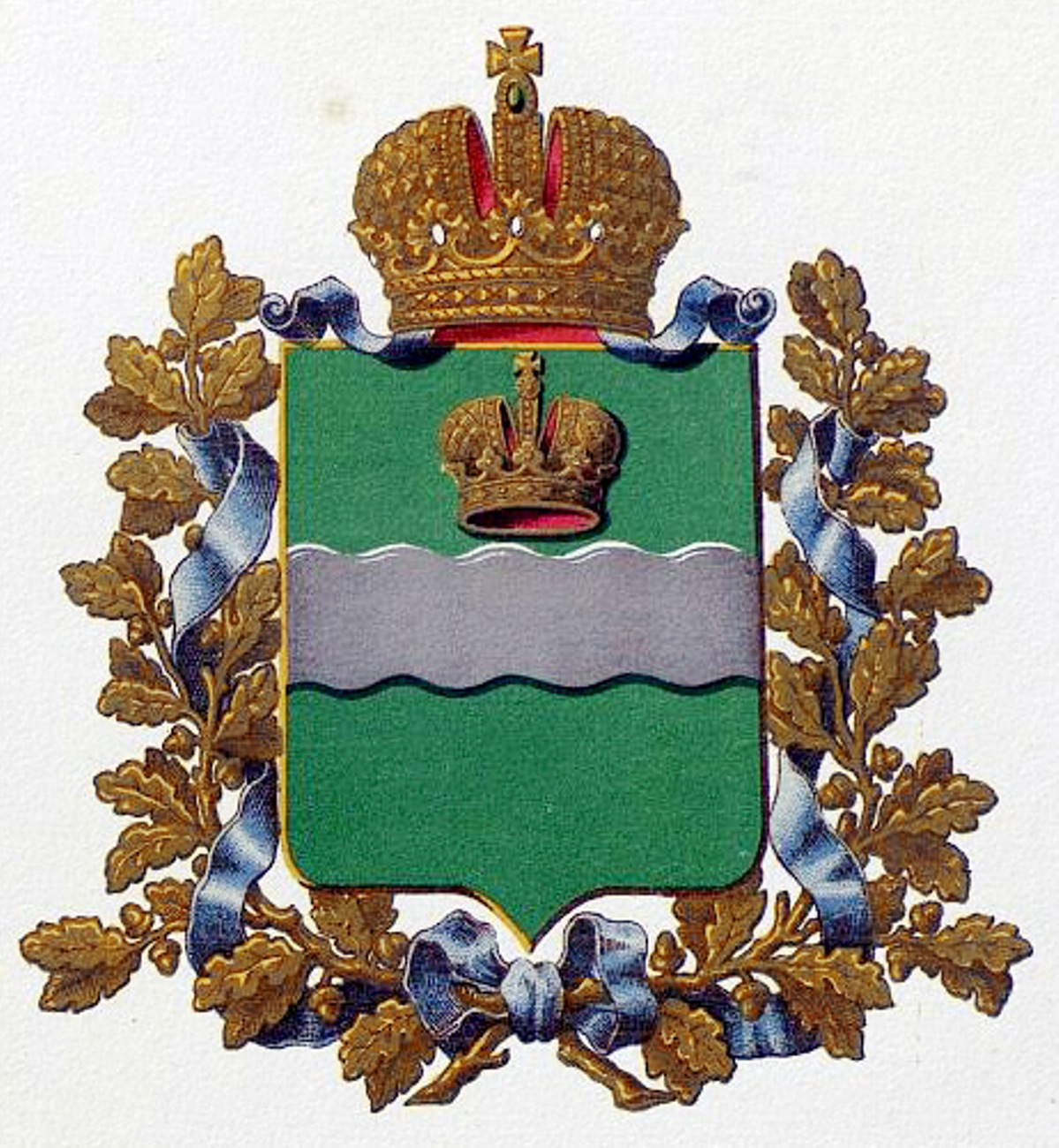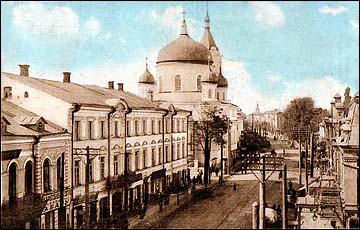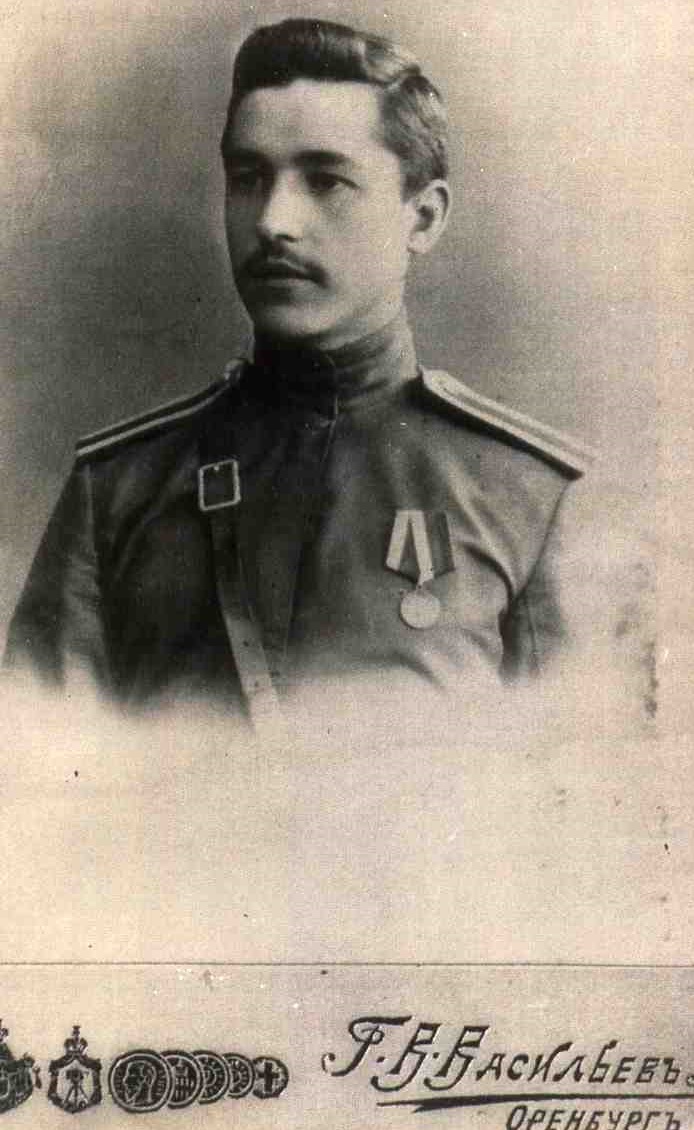|
Andrey Chekharin
Andrey Yevseyevich Chekharin (; 26 October 1892 – 20 October 1941) was a Red Army colonel killed in World War II. Chekharin ended World War I as a junior officer, but did not see much action in the Russian Civil War. He served at military educational institutions and in territorial units during the 1920s and 1930s, holding staff positions during the late 1930s. Chekharin commanded the 37th Rifle Division, destroyed in the Battle of Białystok–Minsk, and then the 269th Rifle Division during Operation Typhoon. He was killed while attempting to break out of encirclement during the latter. Early life, World War I, and Russian Civil War Chekharin was born in the village of Gubino, Kaluga Governorate on 26 October 1892. He served in the Imperial Russian Army from January 1915 as a ''ryadovoy'' (private) of the training command of the 641st Don Foot ''Druzhina'' in Belaya Tserkov. He was later promoted to ''yefreytor'' (corporal) and to junior and senior ''unter-ofitser'' (no ... [...More Info...] [...Related Items...] OR: [Wikipedia] [Google] [Baidu] |
Kaluga Governorate
Kaluga Governorate (1796–1929) was a List of governorates of the Russian Empire, governorate of the Russian Empire and the Russian Soviet Federative Socialist Republic, Russian SFSR. Its capital was Kaluga. Administrative division Kaluga Governorate consisted of the following uyezds (administrative centres in parentheses): * Borovsky Uyezd (Borovsk) * Zhizdrinsky Uyezd (Zhizdra) * Kaluzhsky Uyezd (Kaluga) * Kozelsky Uyezd (Kozelsk) * Likhvinsky Uyezd (Chekalin, Likhvin) * Maloyaroslavetsky Uyezd (Maloyaroslavets) * Medynsky Uyezd (Medyn) * Meshchovsky Uyezd (Meshchovsk) * Mosalsky Uyezd (Mosalsk) * Peremyshlsky Uyezd (Peremyshl, Russia, Peremyshl) * Tarussky Uyezd (Tarusa) Demographics At the time of the Russian Empire Census of 1897, Kaluga Governorate had a population of 1,132,843. Of these, 99.4% spoke Russian language, Russian, 0.2% Polish language, Polish, 0.1% Yiddish, 0.1% Ukrainian language, Ukrainian, 0.1% Belarusian language, Belarusian and 0.1% German language, Ge ... [...More Info...] [...Related Items...] OR: [Wikipedia] [Google] [Baidu] |
37th Rifle Division
The 37th Rifle Division was an infantry division of the Soviet Union's Red Army during World War II. It served in the North Caucasus Military District; established at Novocherkassk in 1919. In June–July 1939 it was at Omsk preparing for action against Japan in Mongolia, but did not see combat. In June 1941 it was part of the 21st Rifle Corps in the Western Special Military District, directly under Western Front control. Colonel Andrey Chekharin commanded the division at the time. Soon after the beginning of Operation Barbarossa the division was effectively destroyed, though by 29 June 1941 a composite regiment (20th Rifle Regiment) formed mostly from division rear units (''Tyl'') was attached to the 153rd Rifle Division. On 24 July 1941 the Petrozavodsk Rifle Division was formed from the 52nd and 1061st Rifle Regiments of the Red Army and the 15th Motor Rifle Regiment of the NKVD. Two days later it was redesignated the 37th Rifle Division. Later fought at Molodechno and Riga. ... [...More Info...] [...Related Items...] OR: [Wikipedia] [Google] [Baidu] |
Moscow Military District
The Order of Lenin Moscow Military District was a military district of the Soviet Armed Forces and the Armed Forces of the Russian Federation. The district was awarded the Order of Lenin in 1968. In 2010 it was merged with the Leningrad Military District, the Northern Fleet and the Baltic Fleet to form the new Western Military District. History In the beginning of the second half of the 19th century Russian officials realized the need for re-organization of the Imperial Russian Army to meet new circumstances. During May 1862, the War Ministry, headed by Army General Dmitry Milyutin, introduced to Tsar Alexander II of Russia proposals for the reorganization of the army, which included the formation of fifteen military districts. A tsarist edict of 6 August 1864, announced in a Defence Minister’s order on 10 August of the same year, established ten military districts, including Moscow. The District’s territory then comprised 12 provinces: Vladimir, Vologda, Kaluga, Kostroma, M ... [...More Info...] [...Related Items...] OR: [Wikipedia] [Google] [Baidu] |
41st Infantry Division (Russian Empire)
The 41st Infantry Division (russian: 41-я пехотная дивизия, ''41-ya Pekhotnaya Diviziya'') was an infantry formation of the Russian Imperial Army The Imperial Russian Army (russian: Ру́сская импера́торская а́рмия, tr. ) was the armed land force of the Russian Empire, active from around 1721 to the Russian Revolution of 1917. In the early 1850s, the Russian Ar .... Organization It was part of the 16th Army Corps. *1st Brigade **161st Infantry Regiment **162nd Infantry Regiment *2nd Brigade **163rd Infantry Regiment **164th Infantry Regiment *41st Artillery Brigade References {{Russian Empire Divisions Infantry divisions of the Russian Empire Military units and formations disestablished in 1918 ... [...More Info...] [...Related Items...] OR: [Wikipedia] [Google] [Baidu] |
Chortkiv
Chortkiv ( uk, Чортків; pl, Czortków; yi, ''Chortkov'') is a city in Chortkiv Raion, Ternopil Oblast (province) in western Ukraine. It is the administrative center of the Chortkiv Raion (district), housing the district's local administration buildings. Chortkiv hosts the administration of Chortkiv urban hromada, one of the hromadas of Ukraine. Population: Chortkiv is located in the northern part of the historic region of Galician Podolia on the banks of the Seret River. In the past Chortkiv was the home of many Hasidic Jews; it was a notable shtetl and had a significant number of Jews residing there prior to the Holocaust. Today, Chortkiv is a regional commercial and small-scale manufacturing center. Among its architectural monuments is a fortress built in the 16th and 17th centuries as well as historic wooden churches of the 17th and 18th centuries. History The first historical mention of Chortkiv dates to 1522, when Polish King Sigismund I the Old granted an ow ... [...More Info...] [...Related Items...] OR: [Wikipedia] [Google] [Baidu] |
Zhitomir
Zhytomyr ( uk, Жито́мир, translit=Zhytomyr ; russian: Жито́мир, Zhitomir ; pl, Żytomierz ; yi, זשיטאָמיר, Zhitomir; german: Schytomyr ) is a city in the north of the western half of Ukraine. It is the administrative center of Zhytomyr Oblast (province), as well as the administrative center of the surrounding Zhytomyr Raion (district). The city of Zhytomyr is not a part of Zhytomyr Raion: the city itself is designated as its own separate raion within the oblast; moreover Zhytomyr consists of two so-called "raions in a city": Bohunskyi Raion and Koroliovskyi Raion (named in honour of Sergey Korolyov). Zhytomyr occupies an area of . Its population is Zhytomyr is a major transport hub. The city lies on a historic route linking the city of Kyiv with the west through Brest. Today it links Warsaw with Kyiv, Minsk with Izmail, and several major cities of Ukraine. Zhytomyr was also the location of Ozerne airbase, a key Cold War strategic aircraft base south ... [...More Info...] [...Related Items...] OR: [Wikipedia] [Google] [Baidu] |
Southwestern Front (Russian Empire)
The Southwestern Front (russian: Юго-Западный фронт) was an army group of the Imperial Russian Army during World War I. During the conflict it was responsible for managing operations along a front line that stretched 615 kilometers, from what is now southern Belarus to northern Romania, and took part in such operations as the Battle of Galicia and the Brusilov Offensive. It was established in August 1914 and lasted throughout the war until the unrest caused by the Russian Revolution, at which point it was demobilized along with the rest of the Russian Army in early 1918. In total some two million troops had been under its command. [...More Info...] [...Related Items...] OR: [Wikipedia] [Google] [Baidu] |
Praporshchik
( rus, Пра́порщик, 3=ˈprapərɕːɪk, ) is a rank used by the Russian Armed Forces and a number of former communist states. The rank is a non-commissioned officer's and is equivalent to in navies. It is usually equivalent to Warrant officer class 1 or Sergeant major in English speaking armies. Within NATO forces, the rank is rated as OR-7 or OR-8. Russia is a rank in the Russian military, also used in other uniformed services of the Russian government such as the police. It was a junior officer rank in Imperial Russia, but was abolished following the Russian Revolution. In 1940, the rank was restored as a separate career group between non-commissioned officers and officers. Imperial Russia was originally an Oberoffizer rank, in line to the Table of Ranks class XII/XIII in the Imperial Russian Army equivalent to of the Imperial Russian Navy and classified as junior officer rank. It was first introduced in Streltsy New Regiments. The name originates from Slav ... [...More Info...] [...Related Items...] OR: [Wikipedia] [Google] [Baidu] |
Junker (Russia)
Junker (russian: юнкер (''yunker''), has several meanings in Imperial Russia. The Russian substantive ''Yunker'' is derived from the German noun ''Junker'', where it means "young lord". *Yunker (ru: юнкер) was the rank for a volunteer at military service (ru: вольноопределяющийся, ''volnoopredelyayushchiycya'', de: One-year volunteer) in the Imperial Russian Army in 19th and 20th centuries. **Fanen-yunker/yunker (ru: фанен-юнкер/юнкер) was a military rank for junior officers of dvoryan descent since 1902. *Kamer-yunker (ru: камер-юнкер; cf. German ''Kammerjunker'') was a courtier title defined in the Table of Ranks, generally equating to ''valet de chambre'' or Groom of the Chamber. *Yunker was a term for students of any military or junker school in between 1864 and 1917. Junker schools Junker schools in Russia were introduced in 1864. They were usually located next to district headquarters in a given region. Junker sc ... [...More Info...] [...Related Items...] OR: [Wikipedia] [Google] [Baidu] |
Ranks And Insignia Of The Russian Armed Forces Until 1917
The Ranks and insignia of the Imperial Russian Armed Forces were the military ranks used by the Imperial Russian Army and the Imperial Russian Navy. Many of the ranks were derived from the Military ranks of the German Empire, German model. The ranks were abolished following the Russian Revolution, with the Red Army adopting an Ranks and insignia of the Red Army and Navy 1918–1935, entirely different system. Army ranks and rank designation The following ranks and their respective insignia were also used by the personnel of the Imperial Russian Air Service from 1912 to 1917. Army ranks 1698-1716 }) ! colspan=3, Field officer, Field officers(russian: Штаб-офицеры, Shtabofitsery, link=no) ! colspan=4, Company-grade officer, Company officers(russian: Обер-офицеры, Oberofitsery, link=no) ! colspan=5, Non-commissioned officer, Non-commissioned officers(russian: Урядники, Uryadniky, link=no) ! colspan=1, Enlisted rank, Enlisted ranks(russian: Нижн� ... [...More Info...] [...Related Items...] OR: [Wikipedia] [Google] [Baidu] |
Yefreytor
Gefreiter (, abbr. Gefr.; plural ''Gefreite'') is a German, Swiss and Austrian military rank that has existed since the 16th century. It is usually the second rank or grade to which an enlisted soldier, airman or sailor could be promoted. Duden; Definition of Gefreiter, in German/ref>Official Website (Bundeswehr): Dienstgrade und Uniformen der Bundeswehr (Service Ranks and Uniforms of the German Federal Defence Forces), in German/ref> Within the combined Ranks and insignia of NATO, NATO rank scale, the modern-day rank of ''Gefreiter'' is usually equivalent to the NATO-standard rank scale OR-2. The word has also been lent into the Russian language (''russian: yefreytor/ефрейтор''), and is in use in several Russian and post-Soviet militaries. History Historically the military rank of ''Gefreiter'' (female and plural form: ''Gefreite'') emerged in 16th-century Europe for the German ''Landsknechte'' foot soldiers, Duden; Origin and meaning of "Landsknecht", in German/ref> ... [...More Info...] [...Related Items...] OR: [Wikipedia] [Google] [Baidu] |
Belaya Tserkov
Bila Tserkva ( uk, Бі́ла Це́рква ; ) is a city in the center of Ukraine, the largest city in Kyiv Oblast (after Kyiv, which is the administrative center, but not part of the oblast), and part of the Right Bank. It serves as the administrative center of Bila Tserkva Raion and hosts the administration of Bila Tserkva urban hromada, one of the hromadas of Ukraine. Bila Tserkva is located on the Ros River approximately south of Kyiv. The city has an area of . Its population is approximately The ancient city of Bila Tserkva was founded in 1032 to provide important defenses against nomadic tribes. In the 13th century, it was invaded by the Mongols, however, and the city was devastated.Kohut, Zenon E. "Mazepa's Ukraine: Understanding Cossack Territorial Vistas." ''Harvard Ukrainian Studies'' 31, no. 1/4 (2009): 1–28 In 1651, it was the site of an important battle between the warring Zaporozhian Host, Zaporozhian Cossack Army (and their Tatar allies) and the Polish– ... [...More Info...] [...Related Items...] OR: [Wikipedia] [Google] [Baidu] |




.png)

